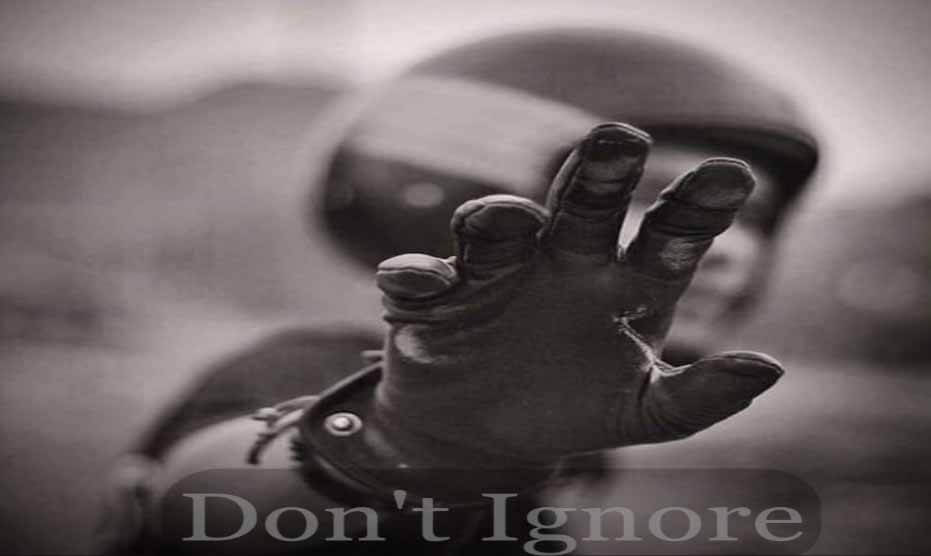Did you know that motorcycles manufactured before 1973 generally did not come equipped with turn signals? If you own one of these renegades, then you may also know that depending on your state, they may be exempted from the legal requirements to have blinkers.
But how was grandpa able to survive a cruise through the instance streets at a time when crack use was at its peak and drivers of lesser finesse; or should we say the motor vehicle was not quite the intelligent computer rig on wheels we have today that can do all kinds of magic tricks to save a rider’s life! The answer is hand signals. The question is When, Why, and How to Use Biker Code Hand Signals on a Motorcycle?
An eternity later, this safety tip can save a “Street Rossi” from making for an organ donor. A silver bullet? Yes indeed!
In this post, we’ve more lined up on how to use the most common hand signals for daily and group rides in the second half, but, first, let’s tackle the when and why you need to master these hand signals to bolster your confidence and safety on public roads.
Why Biker Code Hand Signals on a Motorcycle Increase Your Visibility and Safety
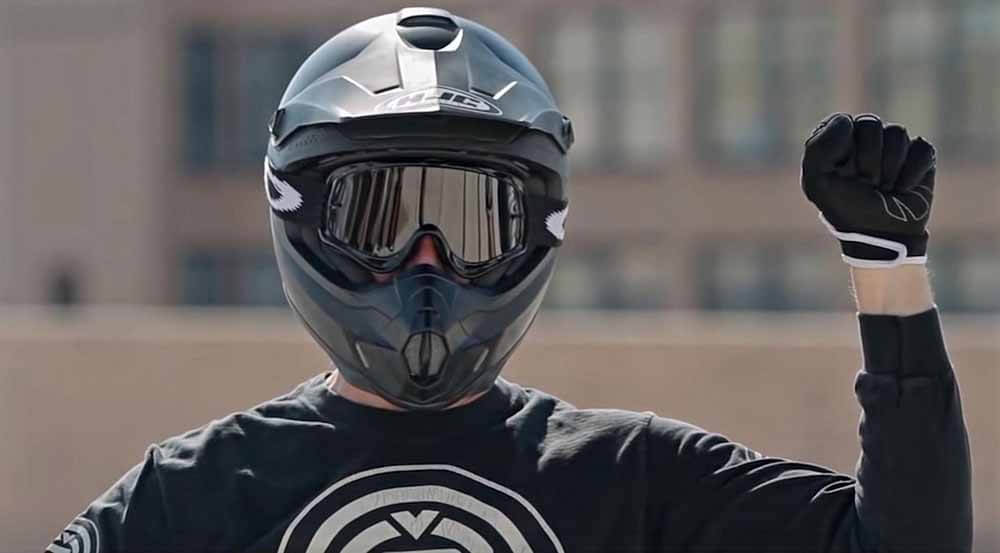
Forget integrated LED turn signals, the human brain works on basic instincts and can pick actual live motion much better even when preoccupied with TikTok videos in the safety or their airbag furnished crash cage! Sure, we are also drawn to light like moths to a flame, but your LED indicators are no match for the smartphone screen or inbuilt dash infotainment screen with more engaging content. As cars turn driverless, we are seeing drivers become ever more reckless, and this is at the expense of bikers who are not exactly larger than life on the street.
To survive the age of Tesla, the silver bullet bikers have to make use of this ancient technique that has worked since the ice age, hand signaling. We are not as quick to evolve as computers and sadly our minds are not much different from those of the stone agers, but hand signals are still probably much more noticeable than small blinker lights and are a lifeline for the modern rider.
If you can utilize a hand gesture, it could grab someone’s attention behind you or across the street. Someone turning across in front of you is a common and most destructive type of motorcycle crash. Use your hands to increase your visibility on the road and avoid someone running into you because they assume you’re not turning or paying attention to your bike, but they see your bike code hand signals.
When to Use Hand Signals on a Motorcycle?
If the motorcycle does not have functioning signals, it is the obligation of the rider to produce a hand signal. Other drivers will be able to see where the bike is going and react accordingly. Drivers may forget to check for hand signals, and if a hand signal is missed, the motorist who ignores it has responsibility. Every motorist has a duty or obligation to keep people safe while driving by being vigilant and following traffic regulations.
Motorcycle Turn Signal Laws
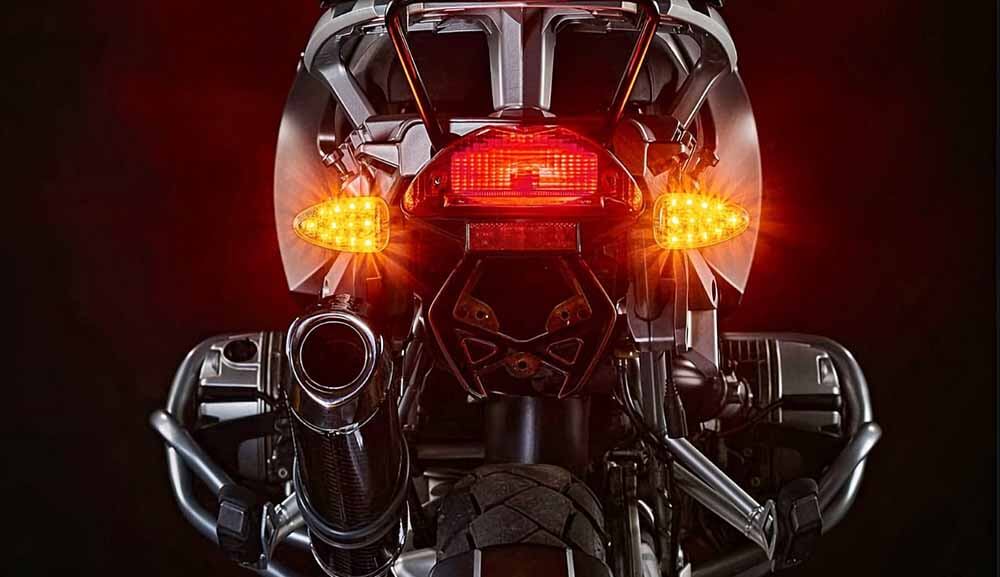
When motorcycling, you must follow the same traffic regulations as any other motorist. Indicate somehow before changing lanes or making a turn to avoid a rear-ended collision. Street legal motorcycles have at least one — but not more than three — headlights, a taillight turn signal lights, brake lights, and rear and side reflectors as well as a number plate lighting amenity to make it visible in the dark.
Bikes predating turn signals requirements (1973 and older) may not be obliged to have them, but riders must demonstrate the ability to use hand signaling when driving these beauties. That said, it is the discretion of the traffic officer to give you a ticket, and they can do it regardless of the date of manufacture. Whether you would rather affix tiny blinkers or spend time-fighting court battles is entirely up to you.
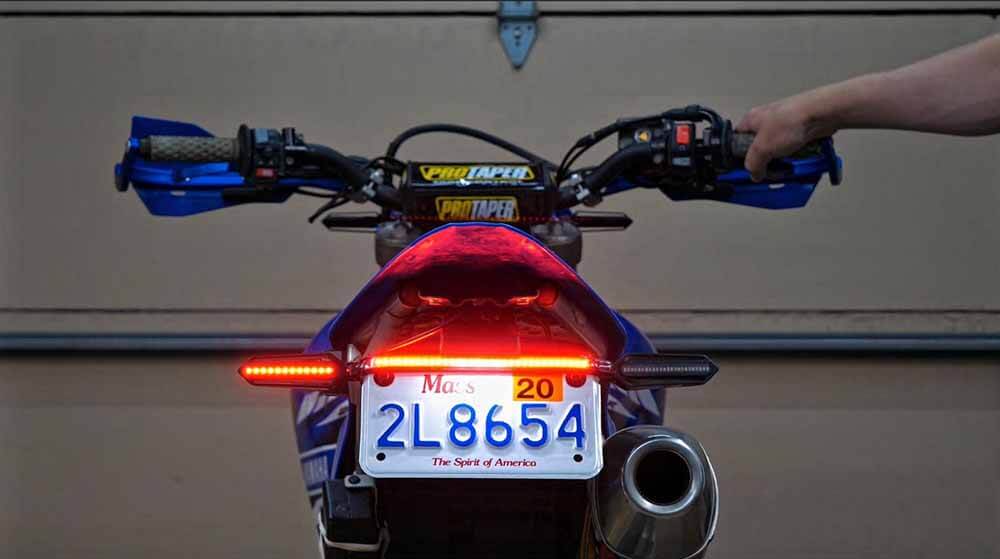
Besides, whether you use your bike as a daily commuter, touring, adventure, cruiser, sport, and other motorcycling modes that make use of public roads, you will need blinkers to maneuver the traffic safely. On the other hand, off-road motorcycles and even track bikes that aren’t often registered for street usage aren’t required to have turn signals or even rear-view mirrors.
For example, if you have a cruiser bike that you use for interstate road trips, you’ll probably want forward-facing signals for increased visibility because you’ll be in close proximity to a lot of traffic. Similarly, having functional turn indicators for in-town driving is a good idea if you travel to work on a street bike. You don’t need them when riding a dirt bike in the hills.
Are Front Turn Signals a Legal Requirement?
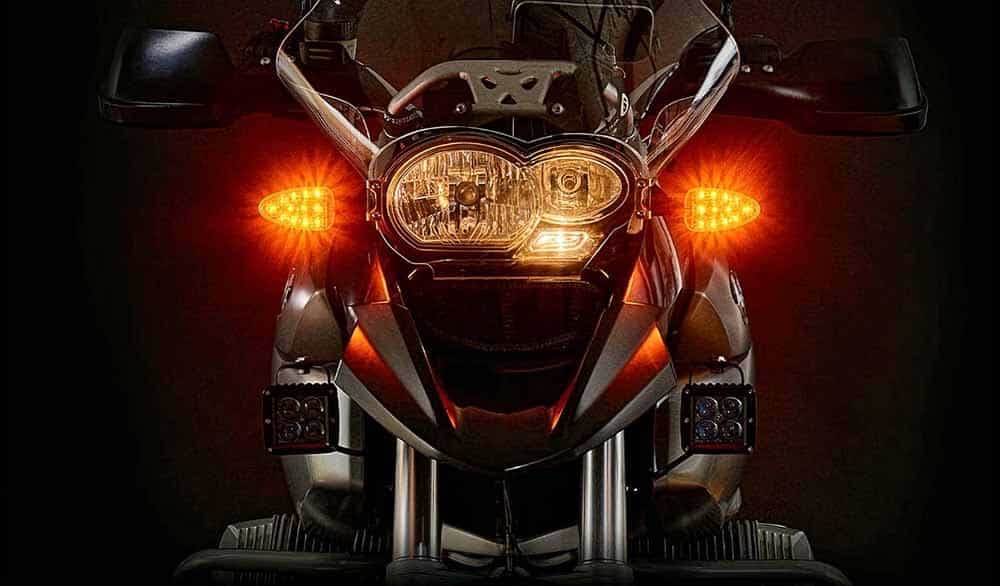
Motor vehicle regulations govern turn signal requirements, which differ from state to state. The country’s local regulations also influence the need for forward-facing blinkers. States that have legislation that requires forward-facing turn signals include California, Maryland, Louisiana, Nevada, Missouri, New York, Ohio, Oregon, New Hampshire, Wisconsin, and Arkansas.
The language of the legislation varies slightly from state to state, but they are all largely the same. These are usually found beneath the sections outlining the standard equipment needed for street legality.
While vehicles had blinkers as standard equipment before motorbikes, it didn’t take long for the rear-facing automotive indicators to be converted to forward-facing motorcycle turn signals. Because motorcycle standards appear to move more slowly than automobile regulations, not all models have included forward-facing indicators.
Most current model year bikes, on the other hand, will almost certainly be equipped with forward-facing blinkers. This permits the sale of bikes in any state. When owners modify their bikes to attain a specific appearance by eliminating lighting, difficulties occur.
If you’re unsure or can’t locate the requirements for your destination, it’s best to presume you’ll need a bike with forward-facing blinkers. When it comes to lighting, it’s best to err on the side of caution. In the worst-case situation, you don’t use the signals at all.
Another factor to consider is the possibility of a change in jurisdiction. You will be forced to have flashers if you cross from a state that does not need them to a state that does. For example, if you go from Idaho, where flashers are not required, into Oregon, where they are, you will not be excused.
Wherever you are riding in the word hand signals on a motorcycle are a near universal way of signaling your intent to turn your bike.
How the Turn Signals Work on a Motorcycle — Then vs. Now
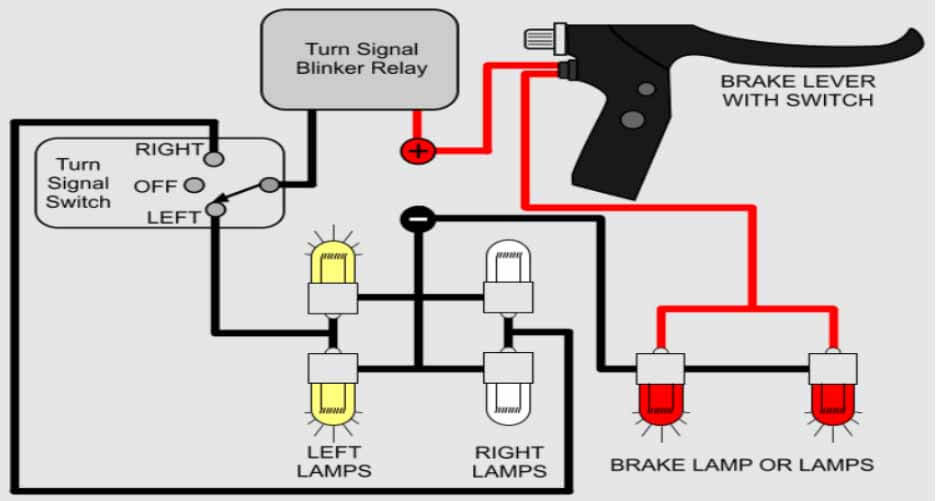
The turn signal circuit is straightforward. The lights are turned on using battery power through a switch that indicates right and left. The blinking effect may be accomplished in a variety of ways. Ever wondered about the origin of the clicking sound associated with blinkers?
Traditional methods relied on a flasher relay with a bi-metallic wire that heated up and changed form. The audible clicking noise is caused by this change in form. The wire clicks back and forth between the light and heating circuits as it changes form.
A solid-state relay is used in modern systems to monitor current flow. The relay is turned on and off by an electrical timer, providing the same blinking effect. Speakers are used in some systems to provide an audible clicking sound.
What Happens When I Get Stopped for Lack of Blinkers?
When a traffic officer stops you for not having the proper turn signals, you will very certainly be given a “fix-it” ticket, commonly known as a correctable violation. This alert allows you to travel someplace with the goal of repairing the problem. This can also apply to any poor lighting or other faults that are governed by law and up to the enforcement officer’s discretion.
To get a fix-it ticket cleared, you only need to get turn signals installed and have an officer on duty at the station or on the street inspect and sign off your ticket. You will then be required to take the signed ticket to a courthouse near you and pay the fine or seek to comply with any other local requirements to get in the law’s good books.
Repeat offenders caught again after the specified correction date, the officer will give you a citation. The amnesty period is up to 30days in some states and generally 5 days and above in most states after which when caught you earn a citation.
Enforcing a vehicle inspection is one technique to prevent bikes without the required equipment from being on the road. Before a vehicle registration is approved, an authorized inspector will check for the equipment needed during an inspection. Before a moving violation may be given, the owner will be advised of any requirements and will have the opportunity to make any required improvements.
Contact your local DMV (Department of Motor Vehicles) to have your motorcycle inspected. Other options for getting a bike inspected exist in some states, such as sheriff’s offices. An inspection may be charged a modest cost depending on the circumstances, but it is a minor amount to pay to guarantee your machine is road legal.
Can Hand Signals on a Motorcycle Be Used in Place of Turn Signals?
The usage of hand signals will be regulated by state legislation. In general, they will not be able to replace broken blinkers, but they may be able to replace the lack of indicators. Hand signaling, in addition to light turn signals, gives an additional layer of visibility to other cars, therefore it’s a good idea to use them anyway.
Hand gestures are straightforward. Because the left hand is historically the driver’s side in the United States, signals are usually made using it. Hold your arm straight out parallel to the ground to indicate a left turn. Hold your arm vertically with your elbow bent at a 90-degree angle to signify a right turn. Hold your arm vertically down to indicate slowing or halting.
Despite this extra layer of protection, not all drivers are aware of hand gestures. They are no longer widely utilized enough to be easily identified. Because current systems are dependable, this is the case. While other drivers may be able to deduce the meaning of the hand signals based on their surroundings, this is not as dependable as it formerly was.
The hazard light function is a feature that a turn signal system has above hand signals. This feature, often known as 4-way blinkers, allows all the indicators to flash at the same time. This is meant to alert other drivers that there is a problem and that they should proceed with caution when driving past the vehicle.
Can You Get a Ticket for Using Biker Code Hand Signals?
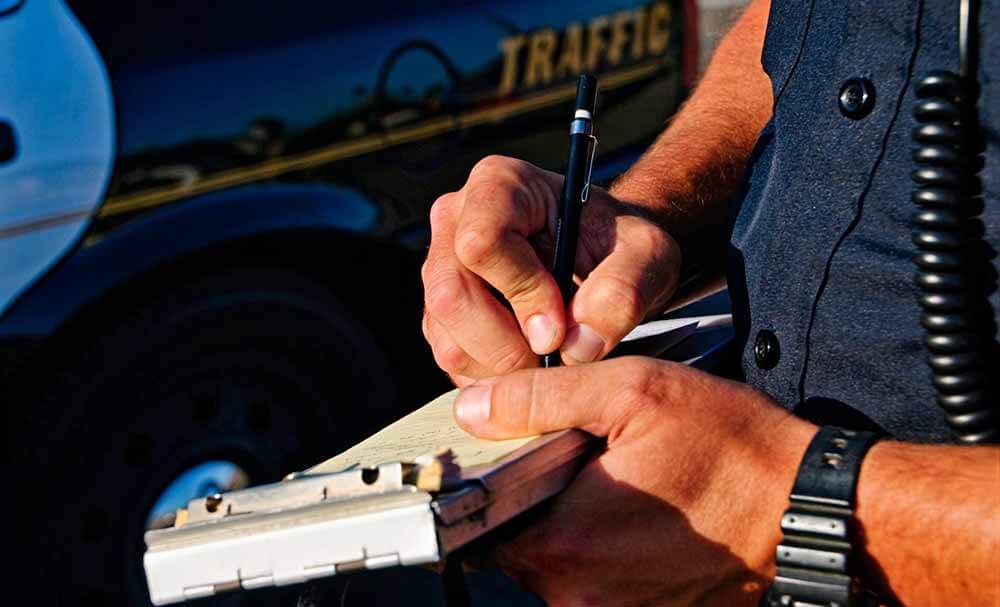
If your turn signal isn’t working, this is the legal and correct way to communicate your intentions. The great majority of today’s young drivers are unlikely to grasp what you are doing. It’s debatable whether a police officer would do so. However, you would still be within your legal rights. But if you reside in a state where signals are necessary, you are legally breaking the law when you ride without them. Penalties for such offenses, including the issue of fines and the enforcement of costs, will be governed by state-specific regulations.
When Are Hand Signals Exclusively Permitted on a Motorcycle?
Hand signals are permitted in the United States. However, neither is the rider required to know those signs as part of their training nor are the drivers in their immediate vicinity necessarily aware of the same.
Turn signals have been mandated by federal law for all motorbikes sold in the United States before 1973 that specifically lacked blinkers by design. They do not, as far as I know, supplant the need in Maryland for the use of electronic signals if they are available.
Riders still choose to augment the electronic turn signaling using hand gestures. I use both since there are so many hand signals and most motorists have no idea what they signify. Also, because most people in the United States grew up with electronic blinkers, many people mistakenly believe you’re waving!
In any state, it is unlawful to turn without properly indicating. Even if you have to utilize a hand gesture, this is the case.
Hand Signals on a Motorcycle 101: Basic and Advanced Signals for Solo and Group Rides
On a motorcycle, there is no global language for hand signals. For example, the swirling finger held aloft to signify the spinning lights on top of a police cruiser is a frequent gesture to inform riders of police approaching. In the United States, however, that means “Gentlemen and ladies, start your engines,” with a touch on the top of your helmet signaling the presence of officers ahead.
These are fundamental motorcycle hand signals for people who are inexperienced. On the road, you should know (and utilize) the following hand signals:
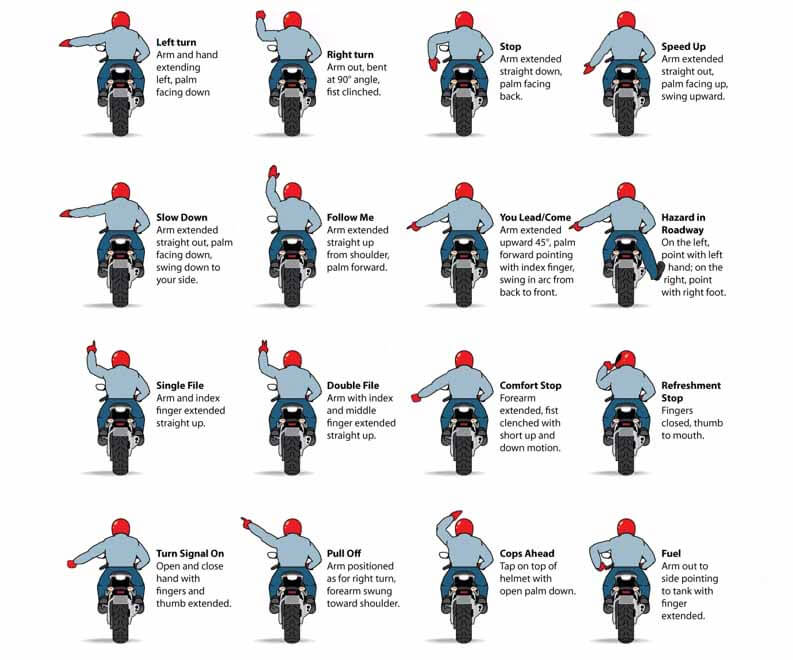
Basic Hand Signals on a Motorcycle
- Right Turn: Hold your left arm outward with your elbow bent at right angles (90°) while making a fist.
- Left Turn: Extend your left hand outward parallel to the ground with the palm facing down.
- Stop: Extend your left hand downwards with the palm facing the rider behind you.
While they aren’t the most thrilling signals, keep in mind that the road isn’t only for bikers, and the above signals are intuitive and can be decoded by people who know nothing about two-wheelers.
Rider Courtesy Hand Signals on a Motorcycle
Here are more fascinating and cryptic signals bikers use around the world:
- Police Ahead: Either tap on a helmet with a downward-facing palm or make a whirling finger sign with the handheld high to imitate police strobe lights or siren.
- Turn Signal On: To make the hand signal blink, open and close palm into a fist and back open with a reasonable frequency
- Hazard on the Road Ahead: Use the left arm to extend and point with the index finger to the ground and where possible extend the right foot also point to the ground.
Exciting, right! These aid signs can assist you in navigating difficult situations. For example, easing off the gas to avoid a citation or avoiding a significant traffic danger.
Group Riders Hand Signals on a Motorcycle
- Pick Up Speed: Extend the left arm outward with palm facing out and make repeated upward
- Slow Down: Extend the left hand outward with palm facing down and do repeat downward motion
- You Follow Me: Lift the left hand up vertically above your body with your palm facing forward.
- Single File: Extend your left hand up vertically above your body with only the index finger pointing up
- Double File: Lift left arm up with index and middle fingers pointing to the sky.
- Come and Lead: extend left arm upwards at about 45° angle, to the vertical with the index finger-pointing, and do back to front waving.
- Pull Over: Extend the left hand outward and continually wave it towards the body
- Gas Stop: Indicate the tank with the index finger with the arm held out for visibility.
- Luxury Stop: Extend left hand and make a fist then do short up and down waving motions
- Stop for Refreshments: Extend your left hand to where it is visible and make a fist with a thumb pointing to the mouth.
What About Left-Handed Low?
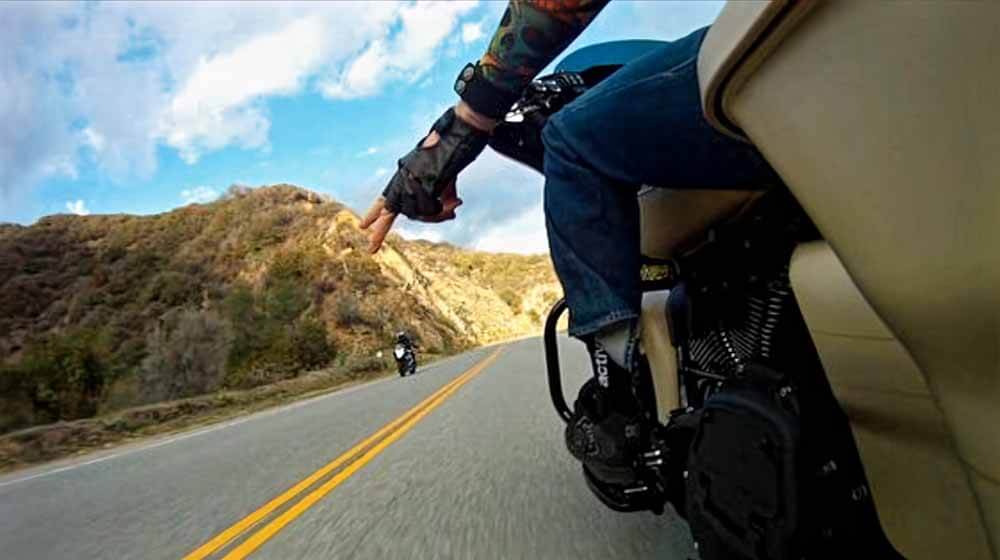
A special sign of respect that motorcyclists often use is the two-finger gesture, which can be used as a greeting when riders first meet or goodbye when parting ways. All motorcyclists often utilize this wave, despite the fact that it has been dubbed the Harley or cruiser wave by some. Here is how to perfect this greeting while.
Keeping Right…
With one, two, three, or five fingers extended, the arm is completely extended and pointing down towards the street at a 45 or lesser degree angle. The look and feel of this wave are also influenced by the orientation of the palm. Either the palm must face the other rider or the road. Throwing a peace sign (duce) or a thumbs up is a typical variant of finger posture.
We can safely do this when right-hand driving. In countries where we keep left, the left hand is not visible to oncoming motorists, but the gurus have coined a new format for the same wave.
Keeping Left…
Now instead of extending out the left hand where it could not be seen, left side riders can do the same sign but with the left hand held up in front of the chest if they are cruising or just around the chin bar area if they are tucked in.
Make sure you’re signaling appropriately when riding your motorbike to protect yourself and others on the road. Be careful of motorbikes on the road and pay heed to their hand signals if you’re in a car or other large vehicle.
Wrapping Up
Whether you use your bike as a daily commuter, touring, adventure, cruiser, sport, and other motorcycling modes that make use of public roads, you will need turn indicators to maneuver the traffic safely. Forward-facing blinkers are required by law in some states but not in others. To be sure, double-check your local laws. If you don’t have them, you can use hand gestures to aid, but they won’t be able to replace damaged indicators. These rules were put in place to aid with traffic flow and to keep motorists safe.
Knowing the various hand signals on a motorcycle can make your journeys safer… well, safer… and you’ll surely appear to know what you’re doing.
Perhaps the best bits about learning and using hand signaling when riding motorcycles are that they are enjoyable and free, increase your own alertness to other motorists, and when used correctly, they definitely make you safer on the road.
Information for this article was partially sourced and researched from the following authoritative Government, educational, corporate, and nonprofit organizations:
Road rules for motorcycle riders
About the Author:
Michael Parrotte started his career in the motorcycle industry by importing AGV Helmets into the North American market. He was then appointed the Vice President of AGV Helmets America, total he worked with AGV Helmets for 25 years. In addition, he functioned as a consultant for KBC Helmets, Vemar Helmets, Suomy Helmets, Marushin Helmets, KYT Helmets, and Sparx Helmets.
In 1985, He is the Founder of AGV Sports Group, Inc. cooperation with AGV Helmets in Valenza Italy
Click here for LinkedIn Profile: https://www.linkedin.com/in/parrotte/
Click here for complete AGV Helmet & AGVSPORT History https://agvsport.com/michael-parrotte
Click here for all AGV Sports Group Social Media information http://agvsport.info/
FM/A

